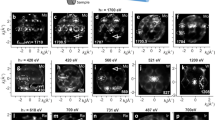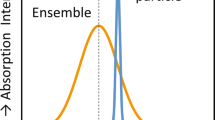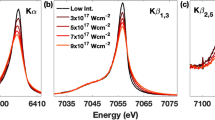Abstract
IN the region of ordinary X-rays, variations in the intensity of radiation transmitted through a metal foil on the short wave-length side of an absorption edge have led to interesting results in relation to the zone-structure of the unoccupied electron levels of a metal. The extension of such fine structure measuiements to absorption edges which lie in the region of ultra-soft X-rays (say 100–300 A.) allows the possibility of a considerable increase in the resolving power of the method, since in this region the breadth of the underlying K, Llevels is known to be only of the order of 1/4 volt.
This is a preview of subscription content, access via your institution
Access options
Subscribe to this journal
Receive 51 print issues and online access
$199.00 per year
only $3.90 per issue
Buy this article
- Purchase on Springer Link
- Instant access to full article PDF
Prices may be subject to local taxes which are calculated during checkout
Similar content being viewed by others
References
Z. Phys., 94, 523 (1935).
Phys. Rev., 45, 370 (1934).
Author information
Authors and Affiliations
Rights and permissions
About this article
Cite this article
SKINNER, H., JOHNSTON, J. Fine Structure of the L23 Absorption Edge of Magnesium Metal. Nature 137, 826–827 (1936). https://doi.org/10.1038/137826b0
Issue Date:
DOI: https://doi.org/10.1038/137826b0
Comments
By submitting a comment you agree to abide by our Terms and Community Guidelines. If you find something abusive or that does not comply with our terms or guidelines please flag it as inappropriate.



